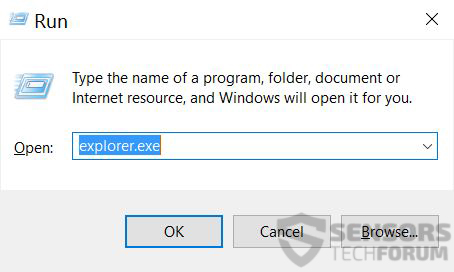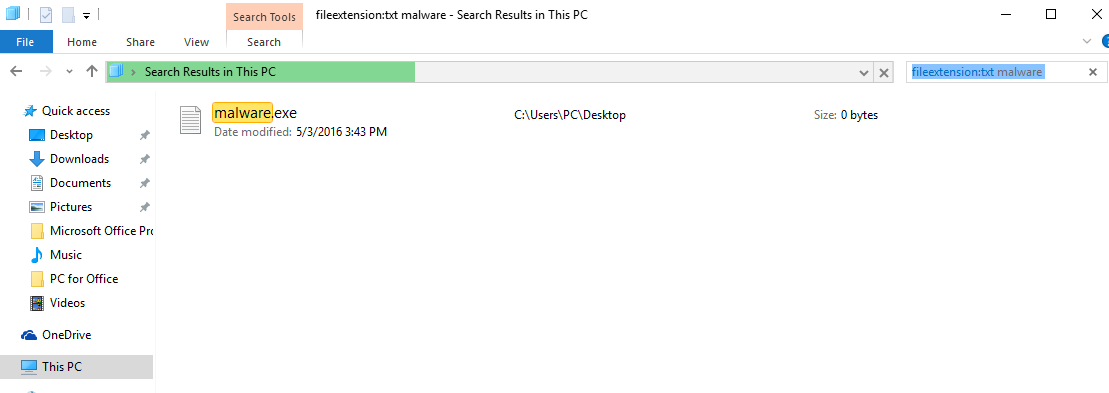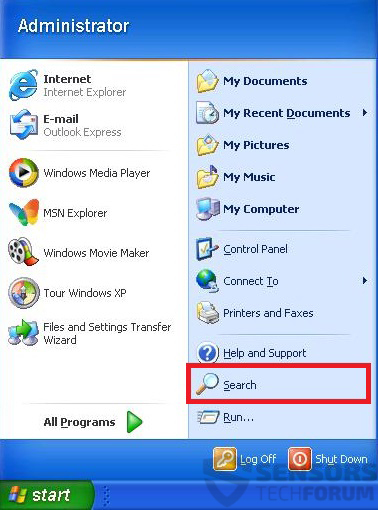 This article has been created in order to help you by explaining how to detect the CPU.EXE miner malware and how to remove it from your computer if malicious. If you are not sure what this miner malware does, perhaps you are aware of the well-known Bitcoin miner virus. The two viruses share some similarities.
This article has been created in order to help you by explaining how to detect the CPU.EXE miner malware and how to remove it from your computer if malicious. If you are not sure what this miner malware does, perhaps you are aware of the well-known Bitcoin miner virus. The two viruses share some similarities.
A new miner malware has been detected by researchers. The miner utilizes a fork from the tpruvot’s CPUMiner-Multi, which is wrapped in Autolt script, adding features to it, like hiding itself as a miner. In addition to this, the CPU.EXE has also been reported to perform other activities on the victim’s computer as it may steal files from it as well. Researchers also have the reason to believe that the malware may be modified to spread to other computers on the victim’s network. If you believe that your computer has been infected by the CPU.EXE miner malware, you should read this article to learn how to detect and remove it from your computer completely.

Threat Summary
| Name | CPU.EXE |
| Type | Monero Miner Malware |
| Short Description | Aims to infect your computer and mine for the cryptocurrency monero by using your GPU and CPU’s power to it’s limits. |
| Symptoms | Computer’s cooling fans are running at high speed. Slower performance than usual. Windows may freeze or stop responding. |
| Distribution Method | Via malicious executables as well as files’ uploaded on shady websites. May come via spam e-mail attachments. |
| Detection Tool |
See If Your System Has Been Affected by malware
Download
Malware Removal Tool
|
User Experience | Join Our Forum to Discuss CPU.EXE. |

CPU.EXE Malware – How Does it Infect
The CPU.EXE miner is the type of malware which includes a modified version of the legitimate program CPUMiner-Multi. The cyber-criminals may preted that the program is a legitimate software by uploading it under different names on suspicious websites. The malware infection file may also pretend to be:
- An installer of a software the victim may be looking to download.
- A patch for a program.
- Crackfix for games or software.
- Portable version of a program.
- Driver for their PC.
In addition to being uploaded as a program, the software may also be sent to you via spammed e-mails with fake statements that the malicious file is an important document, such as:
- Invoice for an order.
- Receipt for a purchase.
- Document from your bank.
To further convince victims to open the malicious e-mails, the cyber-criminals behind this malware may also pretend to be FedEx, DHL, PayPal, eBay, Amazon or other reputable companies in the e-mails to further increase the likelyhood of you opening the malicious file.

CPU.EXE – More Information
Once your comuter has been infected with this miner malware, it may download several files on your computer, the main of which are a .tmp and an .exe file. They have the following locations:
→ C:\Users\{USERNAME}\AppData\Local\temp\{random}.tmp
C:\Users\{USERNAME}\AppData\Local\temp\cpu.exe
Once the maliicous files are dropped on your computer, the CPU.EXE miner may also create a scheduled task to run the malicious executable which in turn will be executed on your Task Manager as an active process in the background. From there, this miner virus may begin to mine for the Monero cryptocurrency by connecting your comptuer to a Monero mining pool via the following command
→ -a cryptonight -o stratum+tcp:{MINING POOL ADDRESS HERE}-u {EMAIL} -p x -t 4
The miner may also link your computer to the wallet of the cyber-criminal and every Monero token that has been mined will be credited to them at the expense of your computer’s resources. In addition to this, the CPU.EXE miner may also exhibit other suspicious activities, as it may come in combination with a Trojan horse. These may be:
- Stealing important files from your computer system.
- Logging the keystrokes you type to steal your passwords.
- Obtain saved passwords and logins on your web browser.
- Take screenshots from your desktop.
- Create copies of itself.
- Update itself to remain active and undetected.

How to Remove CPU.EXE Miner and How to Protect Yourself
In order to remove this cryptocurrency miner from your computer, recommendations are to follow the removal instructions down below. They are specifically designed in order to help you by showing you how to remove this unwanted software from your computer either manually or automatically. In case manual removal presents difficulties for you, we recommend you to remove this malware automatically from your computer system by downloading an advanced anti-malware software. Such program will make sure that CPU.EXE miner is fully gone from your PC and you stay protected against future infections as well.
Manually delete CPU.EXE from your computer
Automatically remove CPU.EXE by downloading an advanced anti-malware program
Preparation before removing CPU.EXE.
Before starting the actual removal process, we recommend that you do the following preparation steps.
- Make sure you have these instructions always open and in front of your eyes.
- Do a backup of all of your files, even if they could be damaged. You should back up your data with a cloud backup solution and insure your files against any type of loss, even from the most severe threats.
- Be patient as this could take a while.
- Scan for Malware
- Fix Registries
- Remove Virus Files
Step 1: Scan for CPU.EXE with SpyHunter Anti-Malware Tool



Step 2: Clean any registries, created by CPU.EXE on your computer.
The usually targeted registries of Windows machines are the following:
- HKEY_LOCAL_MACHINE\Software\Microsoft\Windows\CurrentVersion\Run
- HKEY_CURRENT_USER\Software\Microsoft\Windows\CurrentVersion\Run
- HKEY_LOCAL_MACHINE\Software\Microsoft\Windows\CurrentVersion\RunOnce
- HKEY_CURRENT_USER\Software\Microsoft\Windows\CurrentVersion\RunOnce
You can access them by opening the Windows registry editor and deleting any values, created by CPU.EXE there. This can happen by following the steps underneath:


 Tip: To find a virus-created value, you can right-click on it and click "Modify" to see which file it is set to run. If this is the virus file location, remove the value.
Tip: To find a virus-created value, you can right-click on it and click "Modify" to see which file it is set to run. If this is the virus file location, remove the value.Step 3: Find virus files created by CPU.EXE on your PC.
1.For Windows 8, 8.1 and 10.
For Newer Windows Operating Systems
1: On your keyboard press + R and write explorer.exe in the Run text box and then click on the Ok button.

2: Click on your PC from the quick access bar. This is usually an icon with a monitor and its name is either “My Computer”, “My PC” or “This PC” or whatever you have named it.

3: Navigate to the search box in the top-right of your PC's screen and type “fileextension:” and after which type the file extension. If you are looking for malicious executables, an example may be "fileextension:exe". After doing that, leave a space and type the file name you believe the malware has created. Here is how it may appear if your file has been found:

N.B. We recommend to wait for the green loading bar in the navigation box to fill up in case the PC is looking for the file and hasn't found it yet.
2.For Windows XP, Vista, and 7.
For Older Windows Operating Systems
In older Windows OS's the conventional approach should be the effective one:
1: Click on the Start Menu icon (usually on your bottom-left) and then choose the Search preference.

2: After the search window appears, choose More Advanced Options from the search assistant box. Another way is by clicking on All Files and Folders.

3: After that type the name of the file you are looking for and click on the Search button. This might take some time after which results will appear. If you have found the malicious file, you may copy or open its location by right-clicking on it.
Now you should be able to discover any file on Windows as long as it is on your hard drive and is not concealed via special software.
CPU.EXE FAQ
What Does CPU.EXE Trojan Do?
The CPU.EXE Trojan is a malicious computer program designed to disrupt, damage, or gain unauthorized access to a computer system. It can be used to steal sensitive data, gain control over a system, or launch other malicious activities.
Can Trojans Steal Passwords?
Yes, Trojans, like CPU.EXE, can steal passwords. These malicious programs are designed to gain access to a user's computer, spy on victims and steal sensitive information such as banking details and passwords.
Can CPU.EXE Trojan Hide Itself?
Yes, it can. A Trojan can use various techniques to mask itself, including rootkits, encryption, and obfuscation, to hide from security scanners and evade detection.
Can a Trojan be Removed by Factory Reset?
Yes, a Trojan can be removed by factory resetting your device. This is because it will restore the device to its original state, eliminating any malicious software that may have been installed. Bear in mind that there are more sophisticated Trojans that leave backdoors and reinfect even after a factory reset.
Can CPU.EXE Trojan Infect WiFi?
Yes, it is possible for a Trojan to infect WiFi networks. When a user connects to the infected network, the Trojan can spread to other connected devices and can access sensitive information on the network.
Can Trojans Be Deleted?
Yes, Trojans can be deleted. This is typically done by running a powerful anti-virus or anti-malware program that is designed to detect and remove malicious files. In some cases, manual deletion of the Trojan may also be necessary.
Can Trojans Steal Files?
Yes, Trojans can steal files if they are installed on a computer. This is done by allowing the malware author or user to gain access to the computer and then steal the files stored on it.
Which Anti-Malware Can Remove Trojans?
Anti-malware programs such as SpyHunter are capable of scanning for and removing Trojans from your computer. It is important to keep your anti-malware up to date and regularly scan your system for any malicious software.
Can Trojans Infect USB?
Yes, Trojans can infect USB devices. USB Trojans typically spread through malicious files downloaded from the internet or shared via email, allowing the hacker to gain access to a user's confidential data.
About the CPU.EXE Research
The content we publish on SensorsTechForum.com, this CPU.EXE how-to removal guide included, is the outcome of extensive research, hard work and our team’s devotion to help you remove the specific trojan problem.
How did we conduct the research on CPU.EXE?
Please note that our research is based on an independent investigation. We are in contact with independent security researchers, thanks to which we receive daily updates on the latest malware definitions, including the various types of trojans (backdoor, downloader, infostealer, ransom, etc.)
Furthermore, the research behind the CPU.EXE threat is backed with VirusTotal.
To better understand the threat posed by trojans, please refer to the following articles which provide knowledgeable details.


 1. For Windows 7,XP and Vista.
1. For Windows 7,XP and Vista. 2. For Windows 8, 8.1 and 10.
2. For Windows 8, 8.1 and 10.











 1. Install SpyHunter to scan for and remove CPU.EXE.
1. Install SpyHunter to scan for and remove CPU.EXE.

















 STOPZilla Anti Malware
STOPZilla Anti Malware




